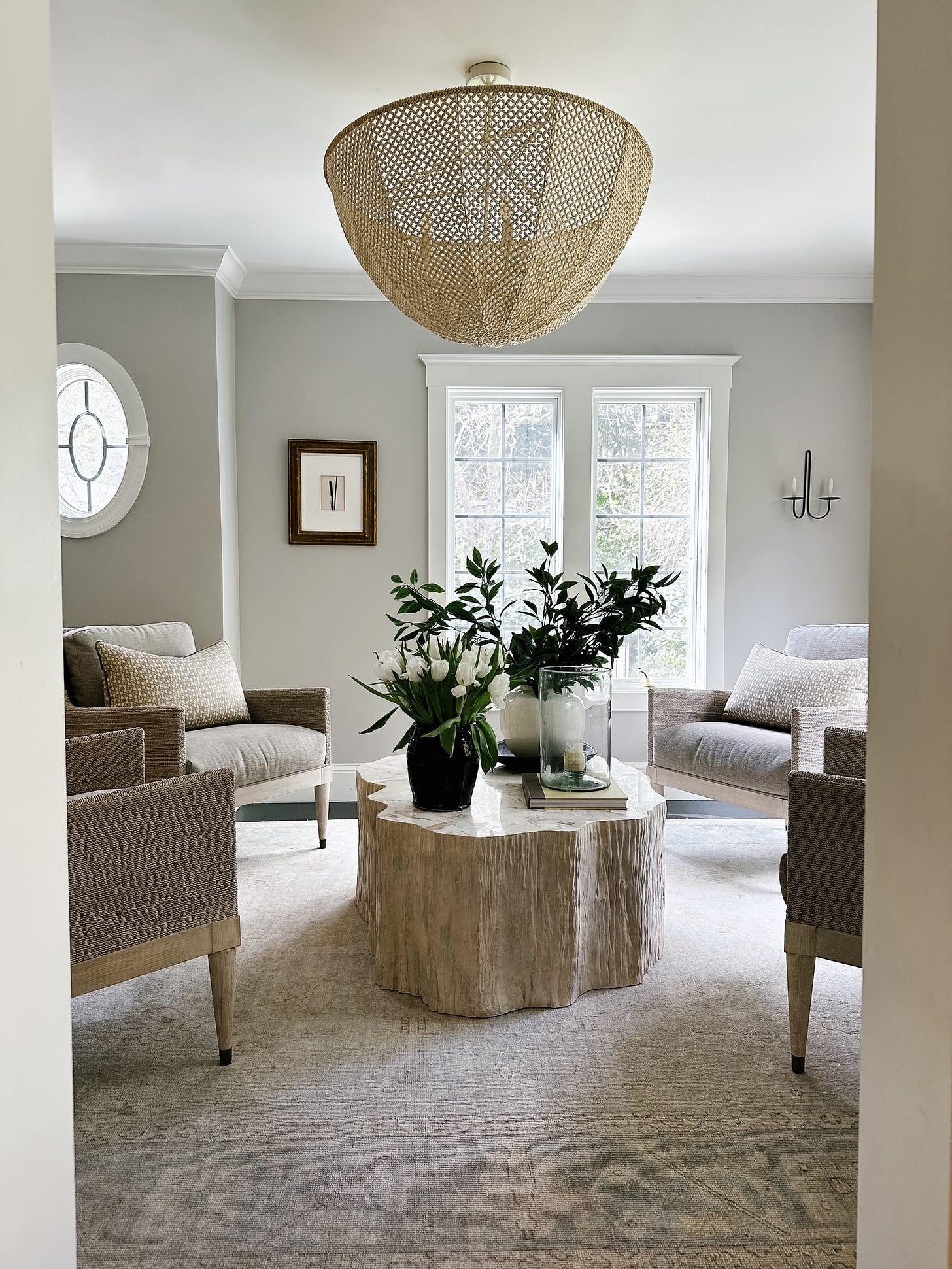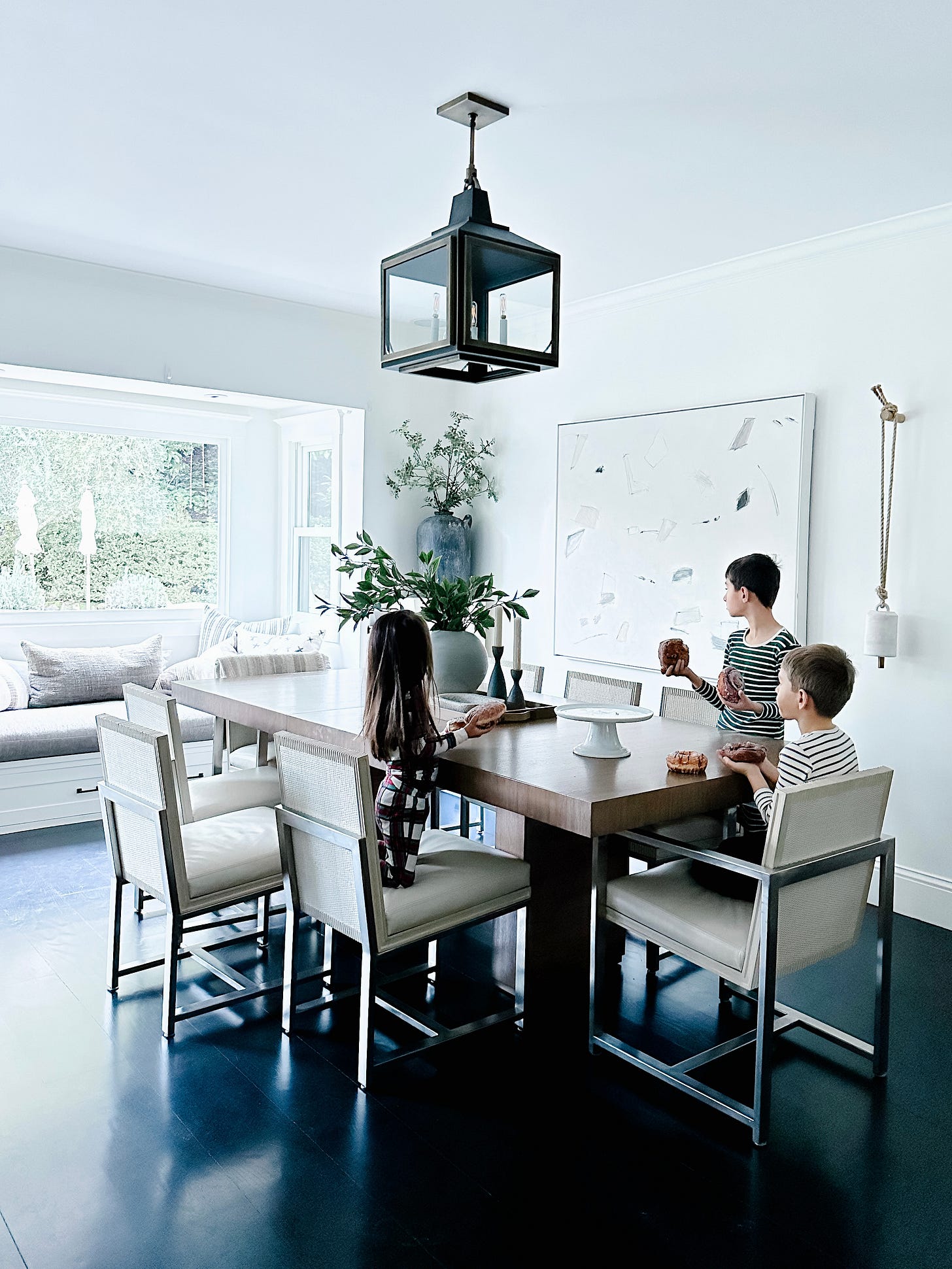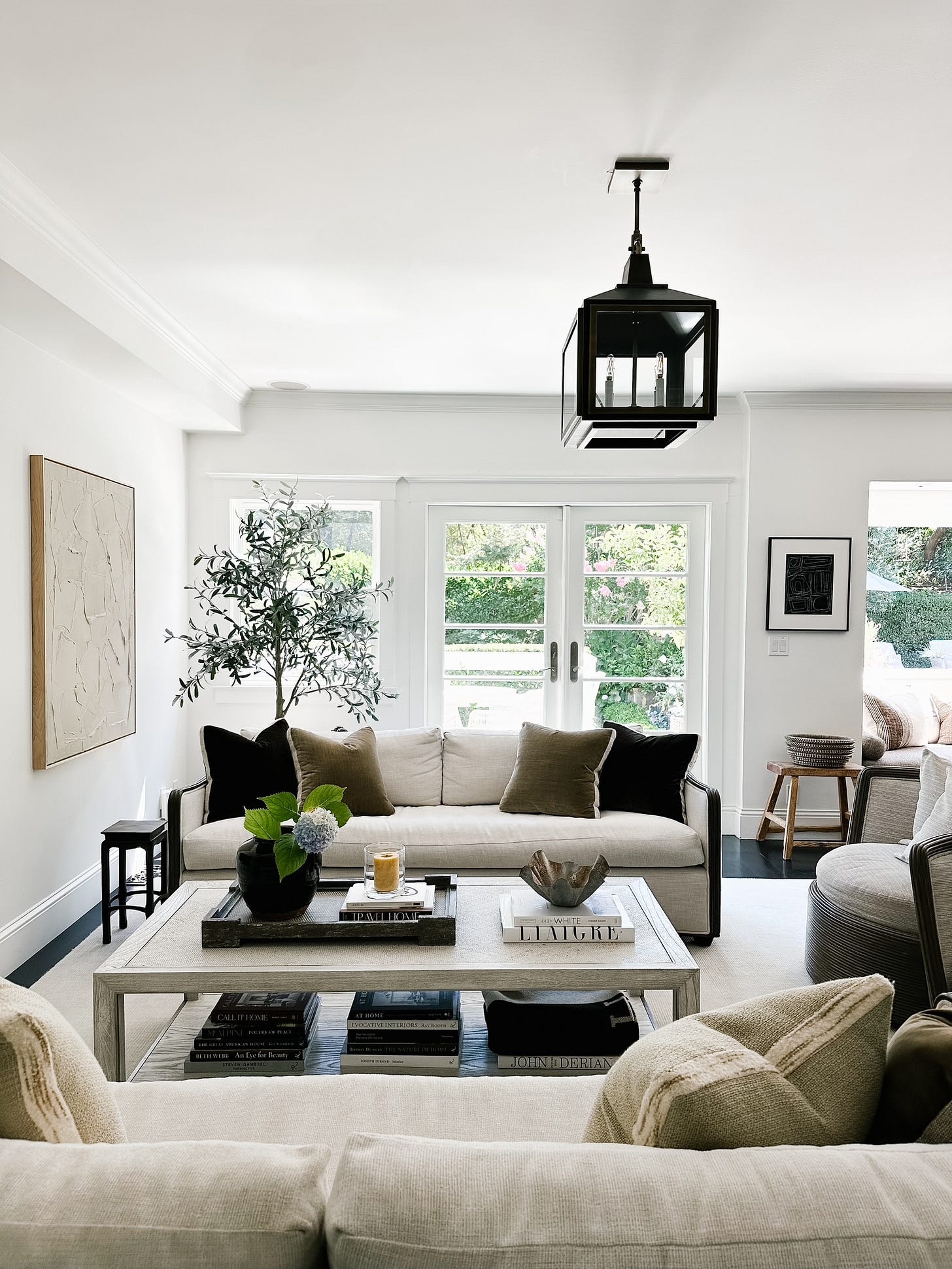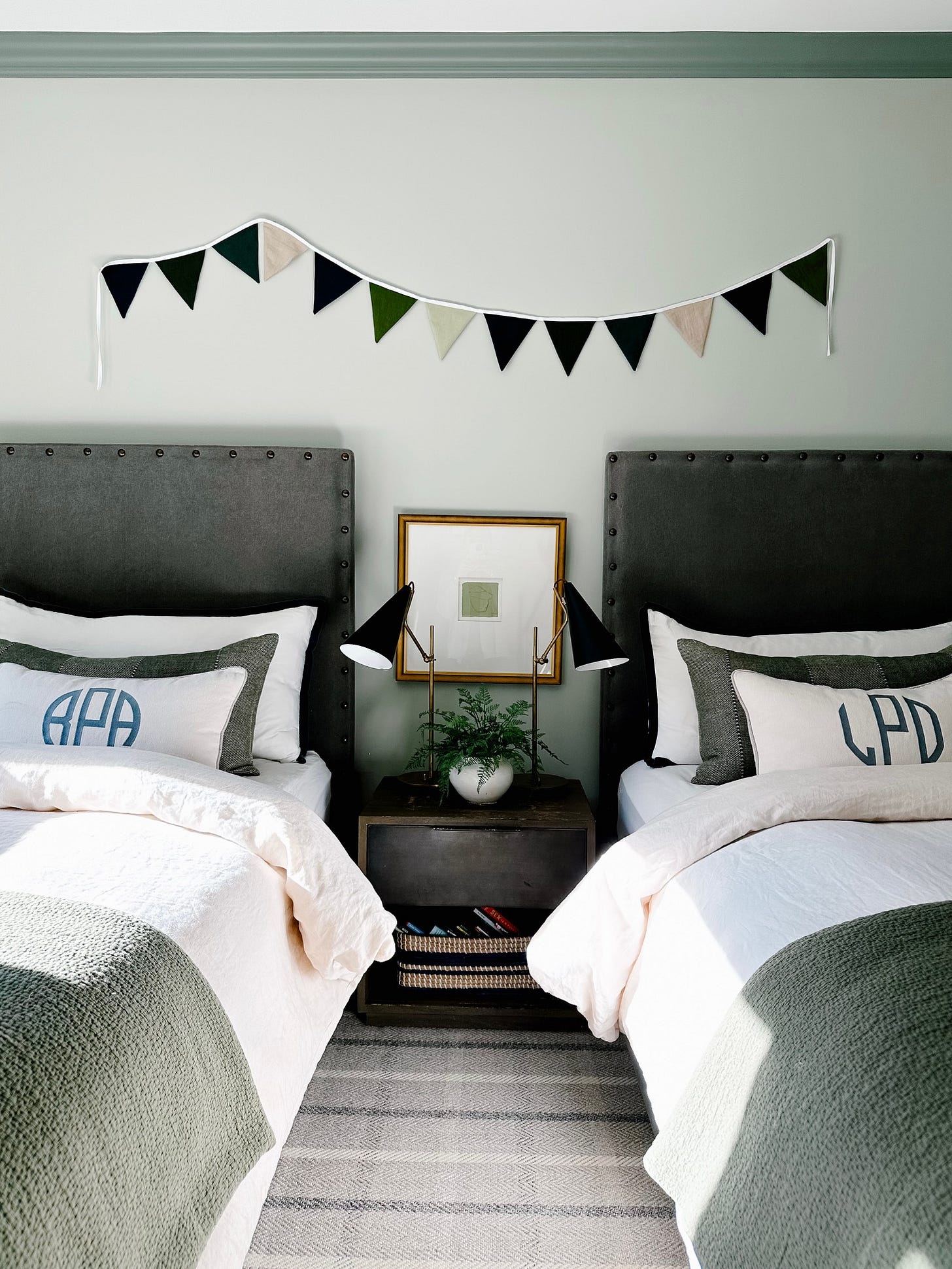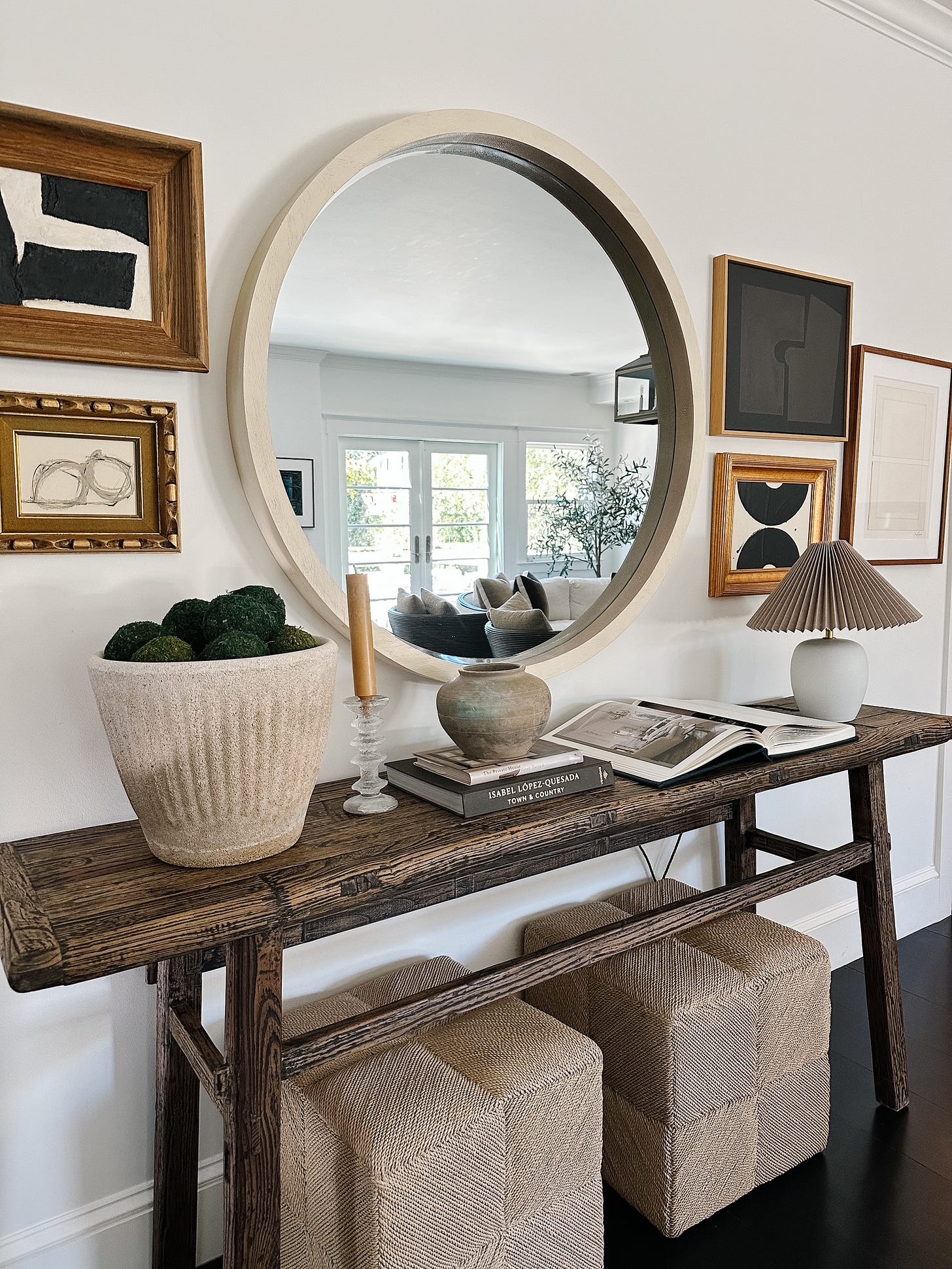The Secret to a Tidy Home Isn’t What You Think
Five quiet philosophies that help me keep our home—and my mind—clear, even with three kids under one roof.
Hands down, one of the questions I get most—whether in my Instagram DMs or from guests stepping through my front door—is how I keep my house so tidy with three young kids. And the truth is, it’s not perfect. There are plenty of messy moments. But for the most part, it really does stay that tidy—without a strict system behind it.
It’s not about chasing perfection or impressing anyone. It’s simply how I’m wired—a natural instinct I’ve followed and quietly refined over time, one that supports how I want to feel. There’s no elaborate cleaning schedule, no rigid routine. Just a handful of simple, quiet philosophies that shape how I care for our space.
For me, tidiness is less about control and more about nervous system support. It’s about creating visual calm—but also emotional clarity. I’m highly sensitive to my surroundings, and when my space feels chaotic, I do too. Over time, I’ve learned that what truly keeps things in order isn’t a list of tasks or hacks. It’s a mindset. A gentle rhythm. A way of being at home.
Here are five philosophies that guide me:
1. Own fewer, better things.
If I could leave you with just one takeaway, it would be this. I’ve found that the less I bring into our home, the less I have to manage—and that guiding principle has made the biggest difference.
Before anything new comes in, I try to pause: Do I really need this? Will it last? Does it serve a purpose—or is it just filling space? I’ve learned that choosing what not to own is just as important as choosing what to keep.
Two mantras echo often in the back of my mind as I move through our home: fewer, better things, and elegance is refusal. They help me stay clear in a world that constantly tells us to buy more. I’d rather invest in something lasting and useful than accumulate things that add noise. I’ve come to believe that everything in my home either supports me or weighs on me.
The answer usually isn’t more storage—it’s less to store.
2. Let your home breathe.
Negative space is one of the most underrated tools for keeping a home tidy. When there’s room around things—on counters, shelves, and floors—the whole space feels calmer and easier to manage. Your eye has a place to rest, and so does your mind.
I try to leave a little breathing room in every room. Not just for beauty, but for ease. That means keeping kitchen counters mostly clear, limiting what lives on the coffee table, and not overloading surfaces “just because.”
The more things we leave out, the more there is to clean, shuffle, and maintain. Tidiness isn’t just about cleaning—it’s about setting up your space so it naturally stays clear. A little breathing room goes a long way.
3. Don’t let things pile up.
Clutter doesn’t arrive all at once—it builds slowly, quietly, when we postpone small decisions. A jacket draped over a chair. A delivery box left unopened. A dish set down “just for now.” I’ve learned that the longer something sits, the harder it becomes to deal with.
Whenever I can, I try to handle the little things as they come—not in a rigid way, but in rhythm with the day. If something takes less than two minutes, I aim to just get it done. I try to open the mail and recycle what we don’t need before it stacks up. I do my best to put dishes straight into the dishwasher instead of letting them linger in the sink. I try to hang up backpacks and coats before they become part of the furniture.
It’s not about being perfectly on top of everything. It’s about staying close to the flow of your home, tending to it in small, steady ways before the clutter has a chance to settle in.
And like most things, it’s a good life lesson too: the longer we avoid what needs tending, the heavier it becomes.
4. Invite your kids into the rhythm.
I don’t expect perfection from my kids—but I do invite them to participate. I want them to grow up seeing tidying as a natural part of life, not a punishment or a chore. It’s simply how we care for the space we all share.
Each morning, they make their beds and open their curtains. It’s not about checking a box—it’s about helping them feel the quiet reward of a tidy space and morning light. They also take turns emptying the dishwasher so it’s ready for the day ahead. That one habit sets the tone—it makes space for the day’s dishes to land where they belong.
I don’t hover or correct how they do it. What matters most is that they’re learning to take part. It’s not about spotless results—it’s about teaching a quiet kind of respect: for our home, for their things, and for the people they live with.
5. Edit as you go.
Even with fewer things, clutter still creeps in. Life changes, kids grow, needs shift—and I’ve found that our home feels best when I let it evolve with us. I’m always editing, quietly, in the background of daily life.
I typically don’t wait for big clean-outs. I keep donation bags in each closet so it’s easy to let go of things on the spot—whether it’s clothes the kids have outgrown or something in my own wardrobe that no longer feels like me. In the kitchen, if I come across dishware or tools I haven’t touched in months—or duplicates I never reach for—I pass them along.
It’s not a chore—it’s just part of staying present to what’s here and what’s no longer needed. Editing, to me, is a form of self-care. I’ve never found it hard to let things go—in fact, I enjoy it. There’s something deeply satisfying about refining life down to what’s most beautiful, most useful, most true. I always feel lighter—physically and emotionally—after I do.
In the end, keeping a tidy home has never been about strict routines or cleaning schedules for me. It’s these quiet philosophies—ways of seeing and caring and noticing—that have shaped how I move through our space. They’ve made our home feel more peaceful, yes, but they’ve also taught me so much about life itself: how to let go, how to pare things back until only the beautiful remains, how to tend to what truly matters.
That’s why I’m endlessly moved by the idea of home. It holds our days, our rituals, our evolution. And when it’s cared for with intention, it gives so much back.
You can find me on Instagram here. And my archives here.



